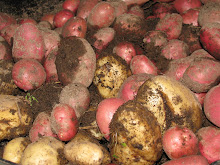Cartography is no longer the sole province of princes
In this article mapping is reviewed as a powerful tool increasingly utilized by Indigenous people to gain rights to ancestral land and resources. The authors trace early projects beginning around 1960’s and 1970’s to Canada and Alaska, and subsequent branching out of mapping to the rest of North America, Southeast Asia, Latin America and Africa. Across time and space different Indigenous mapping methodologies have evolved. Some of the first mapping projects emerged through land claim processes in Canada and Alaska. These were often referred to as traditional land use studies or subsistence maps reflecting societies that were thought of as hunters or fisheries. Outside of North America, the use of participatory approaches, such as participatory rural appraisal (PRA) or participatory action research (PAR) combined with Geographic Information Systems (GIS) grew in prominence. There is also a range of types of maps, such as atlas books to more technical GIS and remote sensing projects, with projects overwhelming aimed at serving a collective purpose to highlight an Indigenous presence within a region, and a desire for autonomy.
The authors say, “without doubt, GIS laboratories managed by indigenous peoples provide a number of benefits”. The benefits are mostly found in successful negotiations with non-Indigenous governments to gain back rights, and more recently communities are finding ways to use mapping to strengthen culture. Despite the promises of Indigenous mapping listed in the review, the authors also note many lingering issues. For instance, although countries like the United States Indigenous communities have afforded their own GIS teams, in many parts of the world communities continue to rely on outside organizations to facilitate and fund the mapping projects. Overall, except for some North American tribes, there is a lack of funding and support for communities to take on any kind of long-term use of technologies such as GIS. As a result, most mapping is done project-to-project with little ability for any continuity and mostly driven by outside donors. The authors conclude by posing a serious of questions that articulate the problematic nature of Indigenous mapping. These questions juxtapose the message of the article that highlights the positive effect of Indigenous mapping. In the end, the authors emphasize the uneven distribution of Indigenous mapping from North America to poorer regions such as those in the southern hemisphere, and pose this as the greatest challenge for the field of Indigenous mapping to overcome.
(Chapin et al. 2005. Mapping Indigenous Lands. Annu Rev.Anthropol 34:619-38)
Tuesday, November 10, 2009
Subscribe to:
Post Comments (Atom)

No comments:
Post a Comment